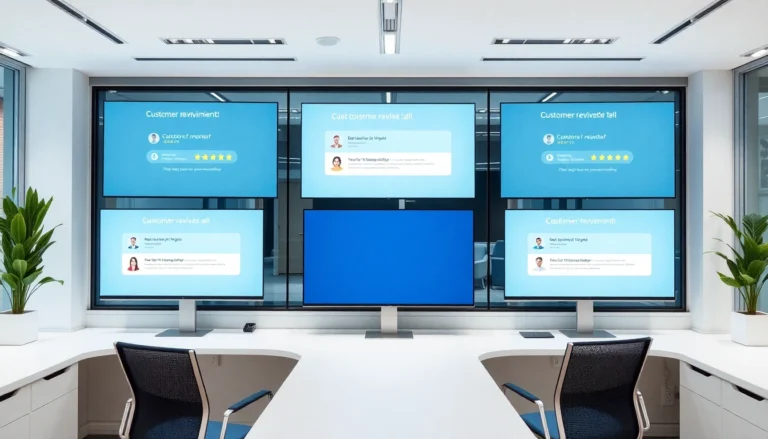
Mastering the Art of Sold Signs: Your Ultimate Guide to Effective Real Estate Signage
In the competitive world of real estate, one of the most powerful tools for attracting buyers, establishing credibility, and closing deals is the humble yet impactful sold sign. These signs serve not only as visual confirmations of a successful sale but also as strategic marketing assets that can elevate a realtor’s brand and generate future opportunities. As the real estate landscape evolves, understanding the nuances of effective sold signage—from design and customization to placement and measurement—is essential for any professional aiming to maximize listing success and visibility.
Understanding the Role of Sold Signs in Real Estate Marketing
Importance of Visual Communication on Listings
Visual cues dominate real estate marketing, with signage playing a pivotal role in capturing attention and conveying key messages. A well-designed sold sign acts as an immediate indicator of recent sales success, signaling to prospective clients that your brand is active and trustworthy. These signs often serve as outdoor billboards, generating local awareness and prompting inquiries from interested buyers or sellers. Their visibility and clarity are crucial because they function as the first point of contact in the buyer’s journey, especially in busy neighborhoods or high-traffic areas.
How Sold Signs Impact Buyer and Seller Perceptions
For sellers, a prominently displayed sold sign can instill confidence that the agent is effective and has a strong track record. It reinforces the perception of competence and swift transaction handling. Meanwhile, potential buyers viewing a property with a clear sold sign may interpret this as a sign of a vibrant community, encouraging further exploration. Also, a decisive, attractive sold sign can help motivate hesitant buyers who see multiple properties marked as sold, creating a sense of urgency and momentum.
Common Types of Sold Signs and Their Features
Sold signs come in various formats designed to meet diverse marketing needs. Traditional metal or wooden signs provide durability, essential for outdoor longevity, while corrugated plastic signs offer lightweight, cost-effective options conducive to quick deployment. Some signs feature double-sided graphics, improving visibility from multiple directions. Additionally, innovative options like magnetic or adhesive signage enable renters or landlords to add temporary indicators or promotional messages. Customization capabilities—such as incorporating logos, contact information, or QR codes—are increasingly popular for branding and lead generation.
Design Tips for Effective Sold Signs
Color Psychology and Branding Consistency
Colors influence perception and can dramatically enhance the effectiveness of a sold sign. Bright, high-contrast colors like red and yellow command attention and evoke excitement, urgency, and positivity. Consistent branding through color schemes helps reinforce brand identity; for example, if your agency’s branding is blue and white, your signs should reflect that palette. Using recognizable colors and logos ensures familiarity and trustworthiness among local prospects.
Typography and Message Clarity
Clear, bold typography ensures that important messages—such as “SOLD” or “JUST SOLD”—are easily readable from a distance. Sans-serif fonts are typically preferred for their simplicity and legibility. Avoid cluttering the sign with excessive text; instead, focus on concise messaging. Including details like your contact number or website subtly reinforces brand recognition without overwhelming viewers. Remember, the goal is to communicate quickly and effectively with passing pedestrians or drivers.
Materials and Durability for Outdoor Use
The choice of materials is crucial for outdoor signage. Corrugated plastic (coroplast) is renowned for its weather resistance and lightweight nature, making it a popular choice. Metal or aluminum signs offer longevity and a professional appearance, suitable for high-traffic areas. Wooden signs can add a rustic charm but require more maintenance. Additionally, UV-resistant inks and protective coatings help prevent fading and weather damage, ensuring that your signage maintains its impact over time.
Customizing Your Sold Sign for Maximum Impact
Incorporating Logos and Personal Branding
Branding consistency is vital in establishing recognition and trust. Incorporate your logo, brand colors, and tagline into your sold signs to reinforce your identity. Custom signage providers like iCustomLabel offer a range of fully customizable options, enabling agents to create signs that stand out and leave a lasting impression. Custom logos not only increase professional credibility but also encourage future referrals and repeat business.
Using QR Codes and Digital Enhancements
Integrating QR codes onto sold signs bridges the gap between traditional signage and digital marketing. Interested viewers can scan these codes to access your website, portfolio, or contact information instantly. This seamless connection can generate more leads and provide potential clients with quick access to your services. Moreover, digital elements like LED displays or augmented reality features are emerging trends promising dynamic engagement, especially in tech-savvy markets.
Choosing Sizes and Shapes to Stand Out
Size plays a critical role in visibility. Larger signs (e.g., 24″x36″) are more prominent but may be constrained by local regulations. Opting for unique shapes—such as circular or custom-cut signs—can draw additional attention. The shape should align with your branding and placement environment, balancing visibility with compliance. As a rule of thumb, aim for scalable, clear signage that can be seen from a reasonable distance in various lighting conditions.
Best Practices for Installing and Maintaining Sold Signs
Placement Strategies for Optimal Visibility
Location is everything. Position your sold sign at the property’s front yard and ensure it faces the road or sidewalk to maximize exposure. Avoid obstructions like trees, power lines, or parked vehicles. For high-traffic areas, consider mounting signs at elevated heights or on sturdy stakes anchored securely into the ground. In some cases, multiple signs across different vantage points bolster visibility and reinforce your branding message.
Timing the Sign Deployment and Removal
Effective timing can influence perception and marketing impact. Install the sold sign immediately after a pending sale is confirmed, signaling activity to neighbors and prospective buyers. Removal should be timely—typically within a week of closing—to maintain a professional appearance and prevent clutter. Keeping signs up too long can dilute their impact or suggest lingering uncertainty.
Maintenance Tips to Keep Signs Looking Fresh
Weather, dirt, and UV exposure can degrade signage quickly. Regularly inspect signs for damage or fading and replace or refurbish as necessary. Cleaning with mild soap and water can preserve colors and readability. Consider anti-graffiti coatings or protective overlays for added resilience. A well-maintained sign reflects professionalism and enhances overall marketing efforts.
Measuring Success and Leveraging Sold Signs for More Listings
Tracking Lead Generation and Inquiries
Implement tracking mechanisms such as unique phone numbers or personalized QR codes on sold signs. Analyzing call or website traffic resulting from signage can quantify ROI and inform future marketing strategies. Additionally, ask new clients how they heard about your services—if they mention seeing your sold sign, it underscores its effectiveness.
Using Testimonials and Success Stories
Feature short testimonials from satisfied clients near the sign or in your marketing materials. Sharing success stories reinforces credibility and highlights your market expertise. Incorporate photographs of the property and the signed agreement to create compelling visuals that foster trust and attract future listings.
Integrating Sold Signs into a Broader Marketing Plan
Sold signage should complement other marketing channels such as social media, email campaigns, and community outreach. Use consistent branding across all platforms, referencing sold signs to demonstrate a strong sales record. Partnering with local businesses or community events can also reinforce visibility and reputation, turning sold signs into a signature element of your professional branding.






